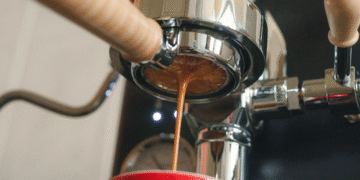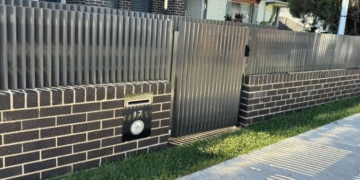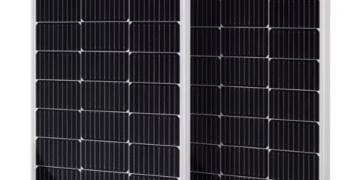If the thought of decluttering your home makes you want to run in the other direction, you’re not alone. It’s easy to feel buried under piles of stuff, especially when you don’t know where to start. But here’s the good news—decluttering doesn’t have to be stressful. With the right approach, you can take control of your space, clear out the clutter, and actually enjoy the process.
This guide will walk you through the best strategies for decluttering without frustration. Whether you’re dealing with years of accumulated belongings or just need a quick refresh, these steps will make the process smooth, efficient, and maybe even a little fun.
1. Hire a Dumpster – The Simplest Way to Handle Bulk Clutter
Let’s be honest—sometimes the sheer volume of stuff you need to get rid of is overwhelming. This is where renting a dumpster can be a game-changer. Instead of making multiple trips to the dump or waiting weeks for local waste pickup, you can have a dumpster delivered right to your driveway. Toss in everything you no longer need, and once you’re done, it gets hauled away for you.
A dumpster rental from https://wasteremovalusa.com/ is especially useful if you’re tackling big projects like cleaning out a garage, basement, or attic. It’s also ideal if you’re getting rid of large furniture, broken appliances, or general household junk. No second-guessing, no waiting—just clear it out and move on.
2. Tackle One Room at a Time
Trying to declutter your entire home in one day is a recipe for burnout. Instead, focus on one room at a time. This way, you’ll see progress faster and avoid feeling completely drained.
Start with a space that will give you the biggest impact, like the living room or kitchen. These are areas you use every day, so clearing them out will instantly make your home feel more open and organized. Once you’ve tackled those, move on to bedrooms, storage spaces, and closets.
3. The “Keep, Donate, Toss” Rule
This simple method will help you sort through everything without overthinking. As you go through your belongings, create three categories:
- Keep – Items you actually use or truly love
- Donate – Things in good condition that someone else could use
- Toss – Broken, outdated, or unusable items that need to go
If you’re unsure about something, ask yourself: “Have I used this in the last year?” If the answer is no, it’s probably time to let it go.
4. Set a Timer and Work in Intervals
Decluttering doesn’t have to take up your entire day. Try setting a timer for 30 minutes and focusing on one area at a time. This keeps you from feeling overwhelmed and helps you stay on track.
Short, focused bursts of decluttering are much more effective than aimlessly sorting through things for hours. Plus, knowing you only have to commit to a short window makes it easier to start.
5. Get Rid of Duplicates
You might be surprised by how many duplicates you have lying around. Do you really need five pairs of scissors? Three coffee makers? Ten almost-empty bottles of lotion? Probably not.
Take a good look at areas like your kitchen, bathroom, and office—these are common places where duplicates pile up. Keep the best and get rid of the rest.
6. Use Storage Bins Wisely
Storage bins can be helpful, but they’re not an excuse to hold onto unnecessary clutter. Use them to store seasonal items, sentimental keepsakes, or things you genuinely need but don’t use every day.
Label each bin so you know exactly what’s inside, and stack them neatly in closets, the attic, or garage. If you find yourself filling bins just to avoid making a decision, it might be time to reevaluate what you’re keeping.
7. Digitize Paper Clutter
Stacks of old paperwork, magazines, and mail can quickly take over your home. Instead of letting paper pile up, scan important documents and store them digitally.
For things like manuals, receipts, and records, see if you can find digital versions online before keeping physical copies. A simple filing system for necessary paperwork will also keep things from spiraling out of control.
8. Sell or Donate Items That Still Have Value
Not everything needs to be thrown away. If you have clothing, furniture, or electronics in good condition, consider selling or donating them.
You can list items on online marketplaces, take them to a local charity, or even host a garage sale. Not only does this help clear out your space, but it also benefits someone else who might need what you no longer do.
9. Create a Maintenance Plan
Decluttering isn’t just a one-time project—it’s an ongoing habit. Once your space is clean and organized, make a plan to keep it that way.
Set aside 10-15 minutes a day to tidy up, put things back where they belong, and avoid new clutter from piling up. Simple habits like putting items away immediately and doing a quick sweep at the end of the day can make a huge difference in keeping your home clutter-free.
10. Celebrate Your Progress
Decluttering is hard work, so take a moment to appreciate what you’ve accomplished. Whether it’s clearing out an entire garage or just organizing a single closet, every step counts.
Treat yourself to a clean, relaxing space and enjoy the feeling of a home that feels lighter, fresher, and stress-free. The more you see the benefits, the easier it will be to maintain your newly organized space.
Enjoy Your Clutter-Free Home
Now that your home is free from unnecessary clutter, you can enjoy the space without the stress. A clean, organized home makes everyday life easier, reduces stress, and even improves productivity. Plus, it’s much more enjoyable to live in a space where everything has its place.
The key to keeping your home clutter-free is consistency. Stay mindful of what you bring in, make decluttering a regular habit, and enjoy the calm, open environment you’ve created.













